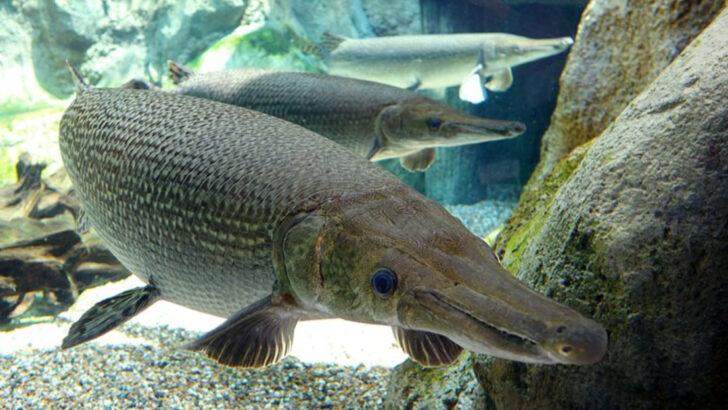It looks like a creature from a monster movie—but it’s 100% real.
Meet the alligator gar: the heavyweight champ of freshwater fish in the U.S., with a face only a prehistoric predator could love and a body built like a torpedo. It’s not just big—it’s jaw-dropping, record-shattering, and older than some dinosaurs.
With a snout full of teeth and armor-like scales, this beast can stretch over 8 feet long and weigh more than 300 pounds. It lurks in murky Southern waters like a ghost from Earth’s ancient past, waiting for the unlucky fish (or duck) that drifts too close.
Forget the cute goldfish from your childhood tank. The alligator gar is a living relic—part fish, part legend, all muscle.
These 13 facts about this river monster will make you think twice before dangling your toes off a dock in Texas or Mississippi. Let’s dive in.
The Record Holder

In the sprawling waters of the Southern United States, the alligator gar claims its title as the largest freshwater fish discovered. Boasting a length of over 10 feet, this ancient species has scales as tough as armor. Its elongated, alligator-like snout adds to its prehistoric appearance. Historically, these giants were feared, often misunderstood, earning a reputation that belied their true nature. Today, they are celebrated as a vital link to the past, captivating the imagination of anglers and biologists alike. Their size and strength have become a symbol of resilience in the diverse aquatic ecosystems of America.
An Ancient Lineage
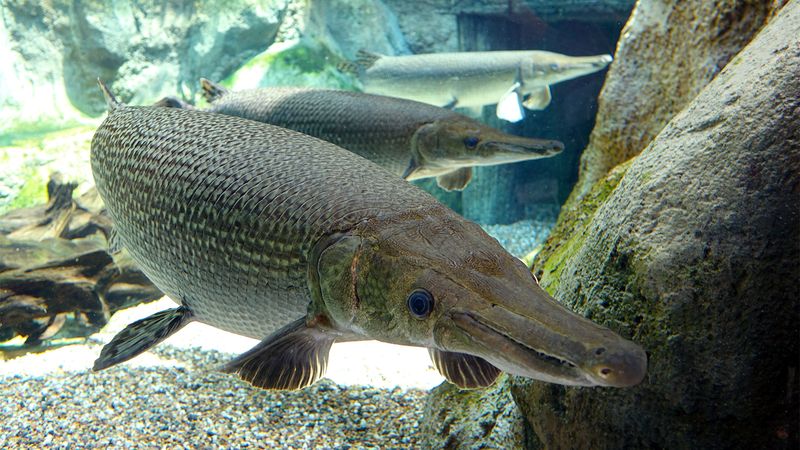
Dating back over a hundred million years, the alligator gar is a living relic from the time when dinosaurs roamed the earth. This lineage has survived countless environmental changes, adapting and thriving through epochs. Its ability to breathe both air and water sets it apart, an evolutionary marvel that has ensured its survival. Fossil records reveal minimal changes over millennia, emphasizing its evolutionary success. This enduring presence paints a picture of resilience and adaptability, a testament to nature’s ingenuity in the face of time. Witnessing an alligator gar is like peering into the distant past.
Impressive Lifespan
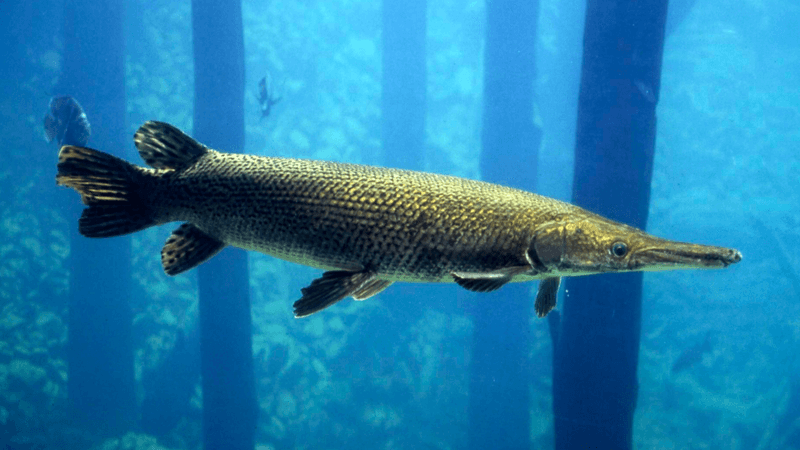
Alligator gars are remarkable not just for their size, but also for their impressive lifespan. These fish can live up to 50 years, with some individuals reaching this milestone with grace. Their longevity allows them to develop imposing size and presence. Throughout their lives, they experience various aquatic environments, adapting to fluctuations in ecosystems. This long life also gives them a chance to play crucial roles in their habitats, maintaining ecological balances. Their extended lifespans contribute to their mystique and make them a fascinating subject for scientific study.
The South’s Aquatic Giant
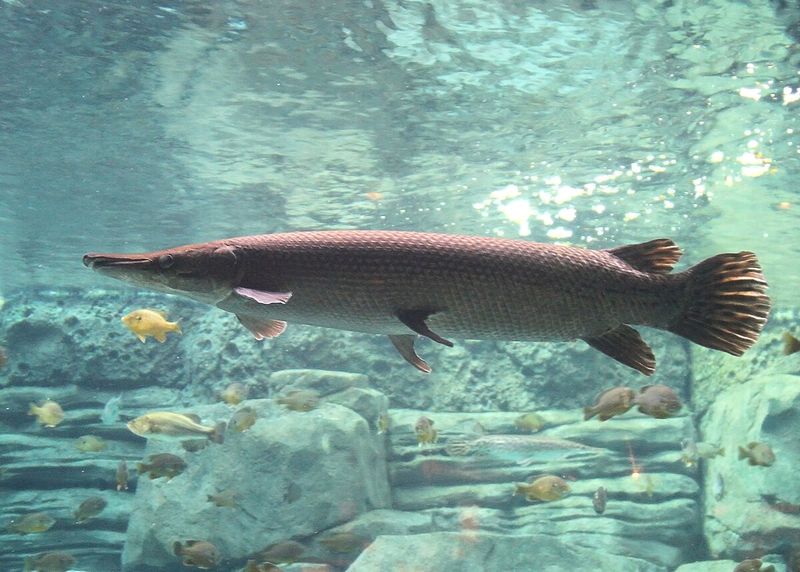
In the Southern United States, the alligator gar is regarded as a true aquatic giant. These fish inhabit slow-moving rivers, bayous, and lakes from Texas to Florida. Their massive size and unique appearance make them a sight to behold in these waters. Often seen basking near the surface, they embody the mystique of Southern waterways. They play a vital role in their ecosystems, preying on invasive species and maintaining balance. Their presence is a reminder of the rich biodiversity and ecological complexity found in the Southern U.S. aquatic environments.
A Unique Respiratory System

The alligator gar boasts a unique respiratory system, allowing it to thrive in oxygen-deprived waters. Equipped with a specialized gas bladder functioning like a lung, it can gulp air directly from the surface. This adaptation is crucial for survival in stagnant or warm waters with low oxygen levels. By breathing air, these fish can inhabit environments that would be inhospitable to many other aquatic species. This remarkable feature underscores the gar’s adaptability and contributes to its enduring presence in various habitats. It’s a perfect example of evolutionary innovation at work.
Predatory Skills
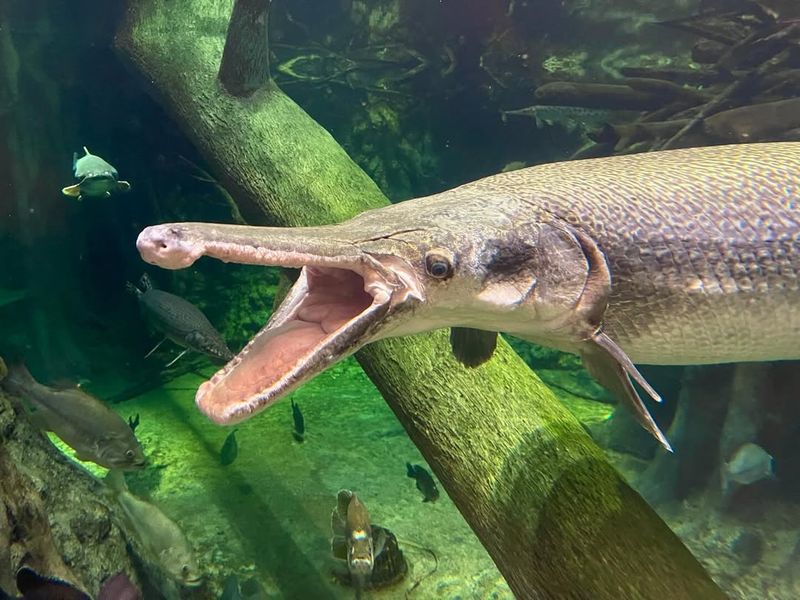
With a mouth full of sharp, needle-like teeth, the alligator gar is a formidable predator. Its hunting strategy involves patience and precision, often lurking in shadows before ambushing prey. This fish relies on both stealth and speed, swiftly capturing unsuspecting fish and small mammals. Its diet includes a variety of aquatic creatures, contributing to controlling populations of invasive species. The gar’s predatory nature is a crucial element in maintaining ecological balance. Observing this hunter in action reveals the power and agility contained within its massive frame.
Cultural Significance
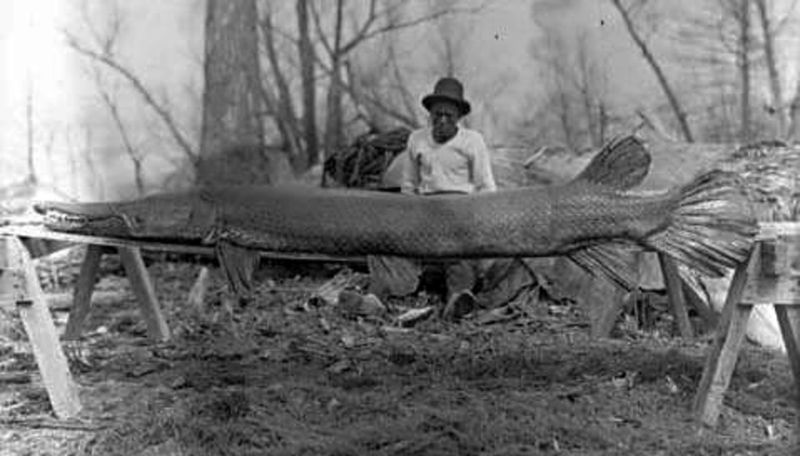
The alligator gar holds cultural significance, especially among Native American tribes. Revered as a symbol of strength and resilience, it features prominently in folklore and traditional practices. Some tribes regarded the gar as a guardian spirit, embodying the power of water and life. Its scales were used in crafting tools and ornaments due to their durability. This connection between humans and gar highlights the fish’s importance beyond mere biology. It stands as a cultural icon, reflecting the intertwined history of nature and human civilization in the regions where it thrives.
The Conservation Effort
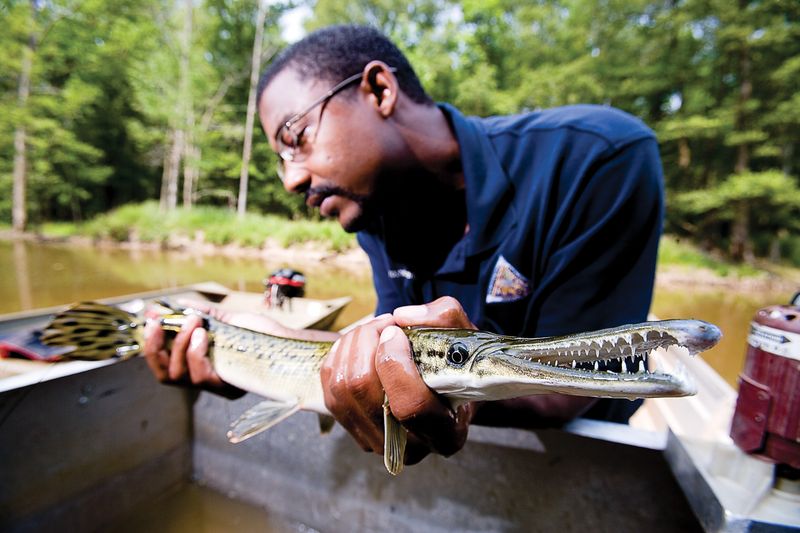
Once feared and overfished, the alligator gar faced significant population declines. Now, conservation efforts are underway to protect and restore their numbers. Biologists and environmentalists work together, monitoring populations and implementing sustainable fishing practices. Protected areas have been established to ensure safe habitats, allowing gars to thrive without human interference. These initiatives highlight the importance of preserving biodiversity and maintaining ecological integrity. Through education and awareness, the gar is now recognized as an essential part of aquatic ecosystems, deserving protection and respect.
A Symbol of Resilience
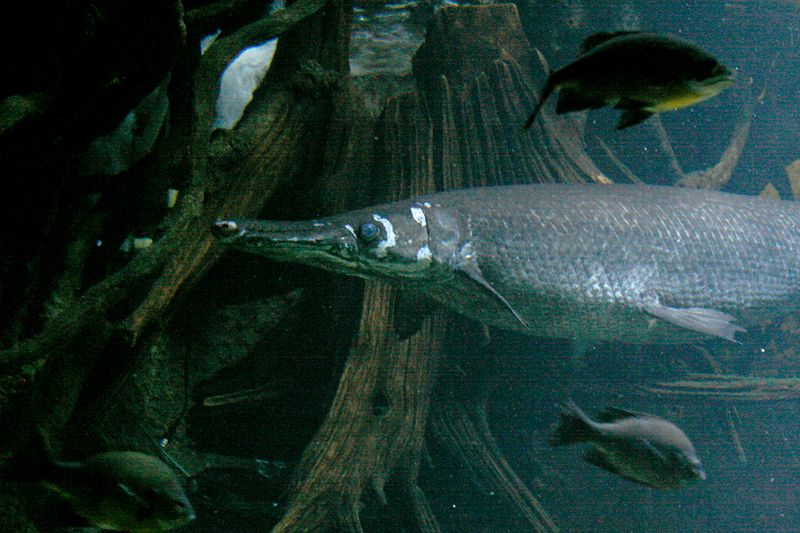
The alligator gar symbolizes resilience, thriving in environments where many species cannot. Its ability to adapt to varied conditions, from brackish to fresh waters, underscores its tenacity. This resilience has made it a focus of ecological recovery programs, where it represents hope for restoring damaged ecosystems. By understanding and protecting this species, we gain insights into ecological processes and the importance of biodiversity. The gar’s story is one of survival and adaptation, inspiring efforts to conserve aquatic life and habitats for future generations.
The Enigmatic Beauty

The alligator gar possesses an enigmatic beauty, with its prehistoric features and intricate scale patterns. Its long, slender body and armored scales give it a unique look that fascinates those who encounter it. Beneath the surface, its eyes convey a sense of ancient wisdom, having witnessed the passage of eons. This aesthetic allure draws both scientists and nature enthusiasts, eager to study its form and function. Despite its fearsome appearance, the gar is a gentle giant, contributing to the ecosystem with grace. Its visual appeal adds to its mystique and charm.
An Ecological Role
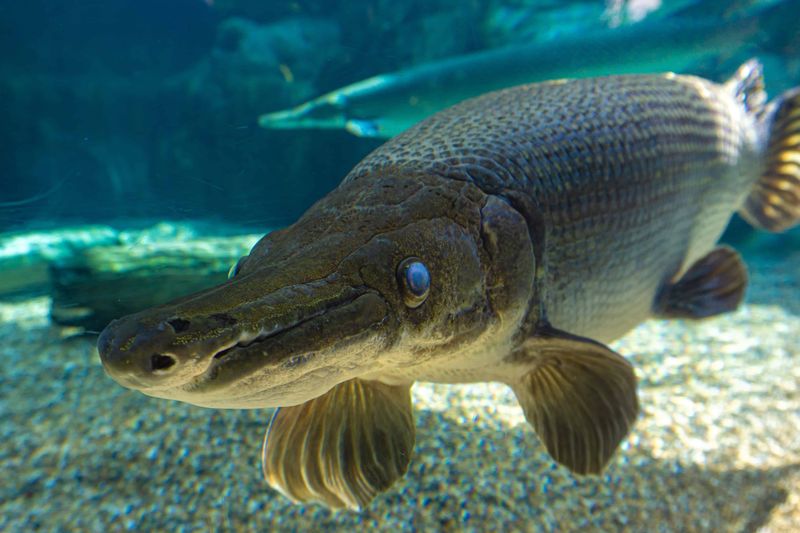
As apex predators, alligator gars play a crucial ecological role in their habitats. By preying on various fish, they help control populations, preventing overpopulation and ensuring species diversity. This balance is vital for healthy aquatic ecosystems, influencing everything from water quality to the survival of other species. The gar’s presence indicates a robust, functioning environment, serving as an ecological barometer. Understanding its role offers insights into maintaining and restoring aquatic health. Observing these interactions reveals the complex web of life within which the gar is both participant and protector.
A Tourist Attraction

The mystique of the alligator gar has transformed it into a sought-after attraction for eco-tourists. Enthusiasts travel to witness these giants in their natural habitats, particularly in the Southern U.S. Guided tours offer opportunities to learn about the gar’s biology, behavior, and conservation status. This interest supports local economies and promotes wildlife conservation. Viewing these fish in their environment offers a unique experience, connecting visitors with nature. The gar’s story of survival and adaptation captivates audiences worldwide, enhancing appreciation for aquatic biodiversity and conservation efforts.
Scientific Research
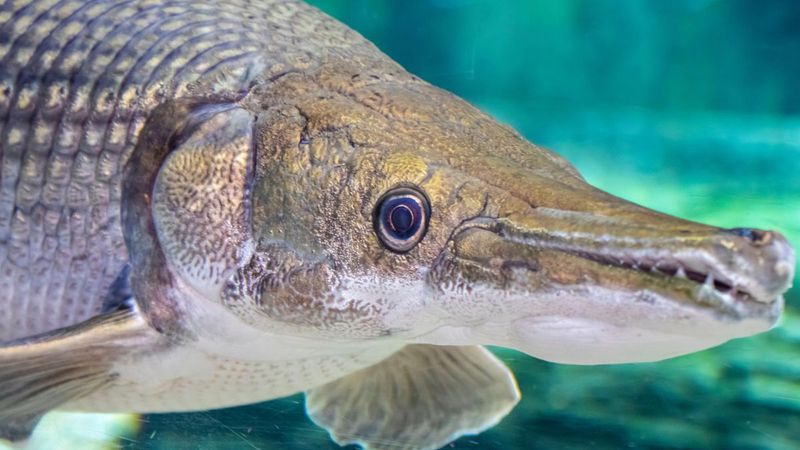
Scientific interest in the alligator gar extends beyond its size and appearance. Researchers study its anatomy, behavior, and genetics to understand evolutionary success. The gar’s unique features, like its air-breathing ability, offer insights into adaptation and survival. These studies contribute to broader ecological knowledge, influencing conservation strategies and environmental policies. Collaboration between institutions ensures a comprehensive understanding of the gar’s role in aquatic ecosystems. This research not only informs conservation but also enhances our appreciation of nature’s complexity and the evolutionary marvels present within it.

